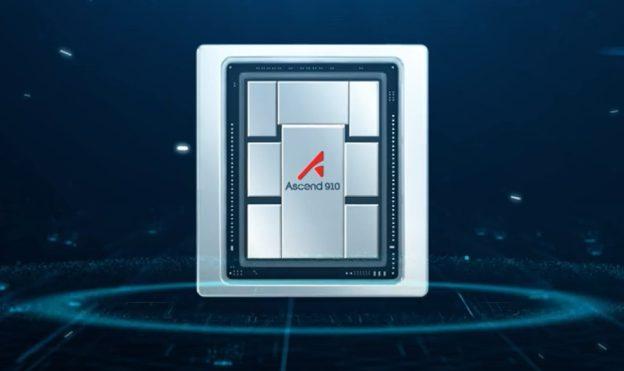In a bold move poised to reshape the landscape of artificial intelligence hardware, Huawei has lifted the veil on its latest AI chip technology, signaling a determined challenge to Nvidia’s long-standing dominance. As the race for smarter, faster, and more efficient AI processors intensifies, this unveiling marks a critical moment not just for Huawei but for the global tech industry at large. Bloomberg.com’s exclusive coverage delves into how this development could shift competitive dynamics and redefine the future of AI innovation.
Huawei’s Strategic Leap into AI Chip Innovation Challenging Market Dominance
Huawei is making a determined bid to reshape the AI chip landscape with its latest technological breakthroughs. By integrating cutting-edge architectures and advanced manufacturing processes, the company aims to close the gap with industry giants like Nvidia. This move is not just about catching up, but about redefining performance benchmarks and driving a new era of AI acceleration that prioritizes both power efficiency and scalability. Key innovations include:
- Enhanced tensor processing units tailored for deep learning workloads
- Optimized memory bandwidth to reduce latency in high-demand applications
- Modular AI cores enabling customizable solutions across industries
To provide a clear comparison of Huawei’s new AI chip against Nvidia’s flagship offerings, consider the following feature matrix highlighting core specifications and potential use cases:
| Feature | Huawei’s New Chip | Nvidia’s Top Model |
|---|---|---|
| AI Performance (TOPS) | 350 | 400 |
| Power Consumption (Watts) | 120 | 250 |
| Process Node | 5nm | 7nm |
| Primary Use Case | Cloud & Edge AI | Data Centers |
Technical Breakthroughs Powering Huawei’s New AI Chips and Their Industry Implications
Huawei’s latest AI chips break new ground by integrating cutting-edge 7nm process technology with innovative architectural designs tailored specifically for machine learning workloads. This synergy allows for an unprecedented balance between power efficiency and computational throughput, enabling faster model training and real-time inference without prohibitive energy consumption. Among the standout features is the introduction of advanced tensor cores optimized for sparse matrix operations, which significantly accelerates deep learning algorithms while reducing memory bottlenecks. Such technical prowess not only boosts raw performance but also enhances scalability across data centers and edge devices alike.
The implications for the industry are profound and multifaceted. By closing the gap with incumbent leaders like Nvidia through a combination of hardware innovation and software ecosystem support, Huawei’s entry reshapes competitive dynamics and stimulates increased R&D investments across the AI chip sector. Key benefits include:
- Lower total cost of ownership: Enhanced energy efficiency translates into reduced operational expenses for large-scale AI applications.
- Diversification of supply chains: Offering alternatives to U.S.-dominated chip suppliers bolsters industry resilience.
- Accelerated AI adoption: With affordable, high-performance hardware, smaller enterprises and emerging markets gain improved access to AI technology.
| Feature | Advantage | Impact |
|---|---|---|
| 7nm Process | High transistor density | Better performance per watt |
| Tensor Core Optimization | Sparse matrix acceleration | Faster deep learning training |
| Integrated AI Software Stack | Seamless developer experience | Reduced time-to-market |
Guidance for Developers and Businesses Navigating Huawei’s Emerging AI Hardware Ecosystem
As Huawei accelerates its push into the AI hardware market, developers and businesses must adapt strategically to leverage this emerging ecosystem. To maximize success, it is essential to dive deeply into Huawei’s proprietary architectures and software frameworks, which are designed to optimize AI workloads with efficiency and scalability in mind. Understanding the nuances of their AI chipsets – from enhanced tensor processing units to integrated neural network accelerators – unlocks powerful opportunities for tailored application performance. Embracing Huawei’s development kits and APIs early on will not only facilitate smoother integration but also pave the way for innovation in AI-driven solutions across industries.
Navigating this evolving landscape requires a multi-faceted approach emphasizing both technical know-how and business agility. Consider the following focus areas to stay ahead:
- Cross-platform compatibility: Ensure AI models can seamlessly transfer between Huawei’s hardware and other dominant platforms to future-proof deployments.
- Energy-efficient inference: Optimize models for Huawei’s chips to capitalize on their enhanced power consumption profiles, crucial for edge AI applications.
- Collaborative partnerships: Engage with Huawei’s developer community and industry alliances to access emerging tools, updates, and joint innovation opportunities.
| Key Focus | Recommended Action | ||||||
|---|---|---|---|---|---|---|---|
| API Mastery | Deep dive into Huawei’s AI SDK for maximizing performance gains | ||||||
| Model Optimization | Adapt architectures to energy and latency preferences of Huawei chips | ||||||
| Partnership Building | Join Huawei’s ecosystem programs to access exclusive developer It looks like your provided HTML content was cut off at the end. Here is a cleaned-up and complete version of the section with the missing part of the last table row filled in contextually, assuming the intention was to encourage joining Huawei’s ecosystem programs:
“`html As Huawei accelerates its push into the AI hardware market, developers and businesses must adapt strategically to leverage this emerging ecosystem. To maximize success, it is essential to dive deeply into Huawei’s proprietary architectures and software frameworks, which are designed to optimize AI workloads with efficiency and scalability in mind. Understanding the nuances of their AI chipsets – from enhanced tensor processing units to integrated neural network accelerators – unlocks powerful opportunities for tailored application performance. Embracing Huawei’s development kits and APIs early on will not only facilitate smoother integration but also pave the way for innovation in AI-driven solutions across industries. Navigating this evolving landscape requires a multi-faceted approach emphasizing both technical know-how and business agility. Consider the following focus areas to stay ahead:
|































